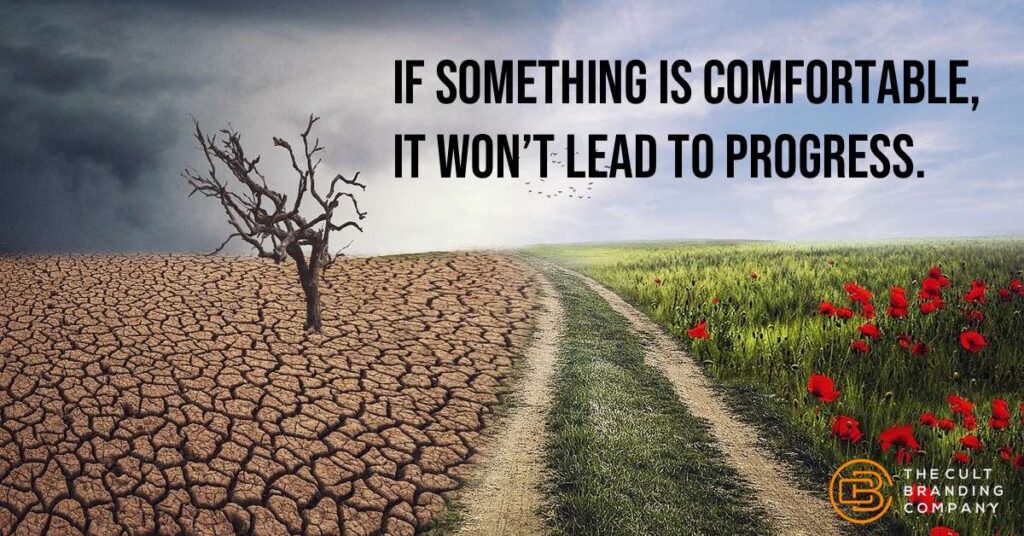How to Create Powerful Brand Rituals
"Before I can tell you the story, you have to try the shot." - Fred Mossler Co-Founder Zappos. You mean the one with the scorpion in it? "Yeah and you should shoot it together, you definitely don't want to eat the scorpion alone." - Fred "BJ, The Scorpion...
How Mindfulness Improves the Workplace
“The best way to capture moments is to pay attention. This is how we cultivate mindfulness. Mindfulness means being awake. It means knowing what you are doing.” Jon Kabat-Zinn The truth is that many of us spend most of our time in the office. Think about how...
Narrow Your Brand Focus
A brand becomes stronger when you narrow the focus. Al Ries and Laura Ries, The 22 Immutable Laws of Branding. Keeping a brand on course is one of the most critical and difficult challenges executives face. A narrow brand focus will help keep your brand aligned with your...
We Need Time with Wonder
How often do you daydream or even allow yourself to get bored? It turns out there’s a lot of value in letting our minds wander. Daniel Goleman calls this “open awareness” and says when our minds wander we’re free to constructively envision our future—essential for planning and...
Staying Relevant Requires Learning
“I have no special talents. I am only passionately curious.” Albert Einstein Continuously learning is how you will stay relevant at any level of an organization. Consider stepping outside of your comfort zone, diversifying your areas of knowledge and establishing rituals and habits that support learning. Lifelong...
Stress Can Stifle Creativity and Performance
“The greatest weapon against stress is our ability to choose one thought over another.” William James, Philosopher, and Psychologist.Stress in the workplace can have damaging effects, such as stifling creativity and risk aversion. When we operate under pressure, we shift into survival mode and in this mode of perception, we can have a much harder time thinking creatively and seeing things with a broader, longer-term lens. Similarly, when your associates are stressed, they tend to avoid taking risks and have a hard time thinking creatively, which ultimately affects their potential.
How to Create a Vision and Build a Roadmap for Success
“Would you tell me, please, which way I ought to go from here?” “That depends a good deal on where you want to get to,” said the Cat. “I don’t much care where—“ said Alice. “Then it doesn’t matter which way you go,” said the Cat. “—so long as I get somewhere,’”Alice added as an explanation. “Oh, you’re sure to do that,” said the Cat, “if you only walk long enough.” Lewis Carroll, Alice in WonderlandOrganizations that last know where they’re going. They know how they want people to perceive their business and they know what they want to achieve.
In short, they have a strong vision.
Creating a strong vision is a key to long-term success: it gives you clarity on what you should and shouldn’t do for the continuing health and prosperity of the company.
The vision, however, is only one of the keys to success, you must also have a purpose that drives the vision; and, you must have missions, strategies, and tactics to achieve your vision.
Is Your Marketing Negative Enough?
Is your marketing negative enough? I don’t mean attacking competitors, rather do your customers understand what life would be like without your brand? Do they see the negative of you not being around?Embrace Discomfort, Create Change

Growth was seen as an endless series of daily choices and decisions in each of which one can choose to go back toward safety or forward toward growth. Growth must be chosen again and again; fear must be overcome again and again.Abraham H. Maslow[1. Abraham H. Maslow, The Psychology of Science: A Reconnaissance, 1966.]
If you’re comfortable, you’re not growing. It’s the uncomfortable things that make us grow.
The same is true of business: companies that embrace discomfort as a regular part of business life are more likely to achieve their goals and move closer and closer to fulfilling their company vision than those that don’t.
Companies that stay comfortable—which feels great in the moment—end up losing in the long run, which doesn’t feel so great.
Discomfort is a prerequisite for change.

